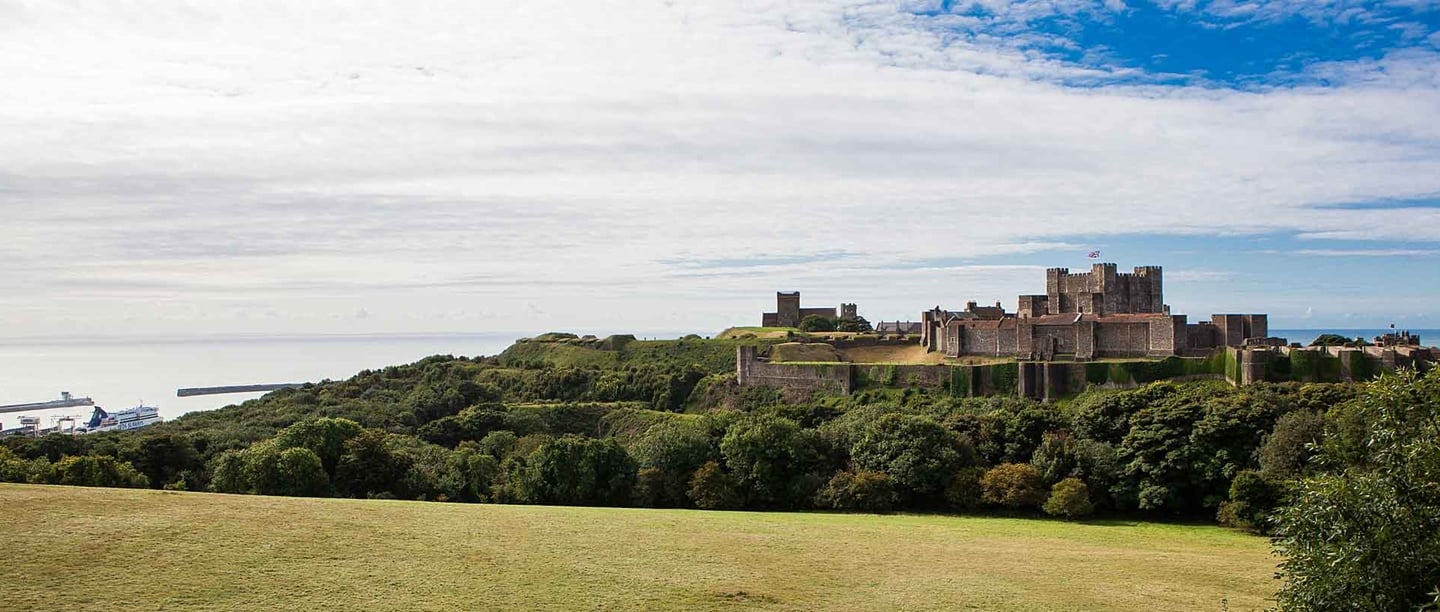Prehistory (Before AD 43)
Prehistory is the time before written records. It’s the period of human history we know the least about, but it’s also the longest by far.
The earliest known humans arrived in these lands around 900,000 years ago. Prehistory stretches from then until the Roman invasion in AD 43. In the hundreds of thousands of years before history began, these lands underwent huge climactic, societal, political, technological and geological changes.
Introduction to Prehistoric EnglandRomans (AD 43–c.410)
In 55–54 BC, Julius Caesar arrived on the shores of Britain, but thanks to guerrilla resistance and bad weather, his conquest was not successful. Almost 100 years later, in AD 43 the emperor Claudius launched a full-scale invasion, and Britain’s Roman era began.
The Romans stayed in Britain for almost four centuries. In some parts of the country they were met with rebellion and resistance, but in more peaceful areas cities were founded, villas constructed and a network of roads developed that can still be traced today. And in AD 122, the emperor Hadrian, visiting Britain, ordered the building of his famous wall.
Introduction to Roman EnglandEarly Medieval (c.410–1066)
The six and a half centuries between the end of Roman rule and the Norman Conquest are among the most important in English history. This long period is also one of the most challenging to understand – which is why it has traditionally been labelled the ‘Dark Ages’.
Yet a kingdom of England emerged in these centuries, and with it a new ‘English’ identity and language.
Introduction to Early Medieval EnglandMedieval (1066–1485)
Duke William of Normandy’s resounding triumph over King Harold at the Battle of Hastings in 1066 marked the dawn of a new era. The overthrow of the Saxon kingdom of England was to transform the country the Normans conquered, from how it was organised and governed to its language and customs – and perhaps most visibly today, its architecture.
This was also a period of upheaval and change, a time of revolt, civil war, devastating plague and royal unrest.
Introduction to Medieval EnglandTudors (1485–1603)
Henry VII’s victory against Richard III at the Battle of Bosworth ended the turbulent Wars of the Roses and began the Tudor dynasty – possibly the most famous royal family in English history.
The country underwent huge changes during the reigns of three generations of Tudor monarchs. Henry VIII ushered in a new state religion, and the increasing confidence of the state coincided with the growth of a distinctively English culture.
Introduction to Tudor EnglandStuarts (1603–1714)
The Stuart era began when James I, who was also James VI of Scotland, succeded Elizabeth I. She had died childless in 1603. James's ascention to the throne brought together the the two long-warring nations of England and Scotland.
The Stuart period witnessed intense religious and political conflicts, which shifted power from the monarchy to parliament. Meanwhile, discoveries and innovations transformed science, architecture and everyday life.
Introduction to Stuart EnglandGeorgians (1714–1837)
When Queen Anne died in 1714 with no surviving children, the German Hanoverians were brought in to succeed her. This began the Georgian age – named after the first four Hanovarian kings, all called George.
This period saw Britain establish itself as an international power at the centre of an expanding empire, and accelerating change from the 1770s onwards made it the world’s first industrialised nation.
Introduction to Georgian EnglandVictorians (1837–1901)
Queen Victoria came to the throne when she was just 18 years old. She would rule Britain for over 60 years. During this long reign, the country acquired unprecedented power and wealth. Britain’s reach extended across the globe because of its empire, political stability, and revolutionary developments in transport and communication.
Many of the intellectual and cultural achievements of this period are still with us today.
Introduction to Victorian England20th century (1901–2000)
The Britain of the year 2000 was unimaginable at the end of the Victorian era in 1901.
The 20th century saw two world wars catalyse enormous social change across the country, including dramatic enhancements in health and education. The motor car stormed through town and country, transforming both, and Britain no longer ruled a third of the planet.
Introduction to 20th-century England
